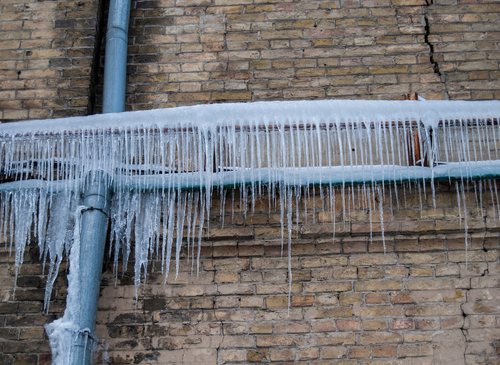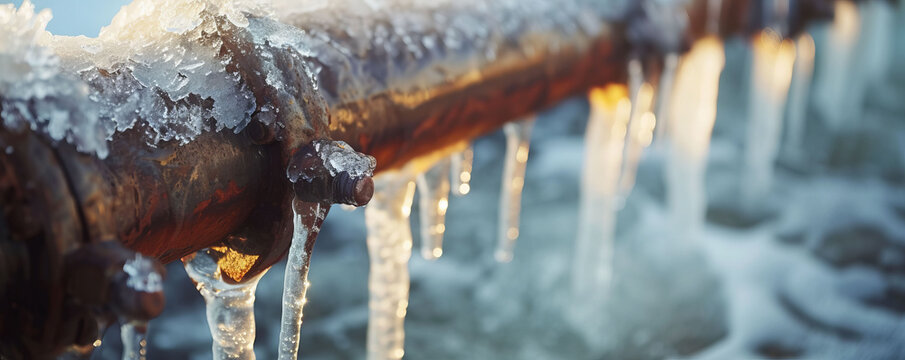Essential Tips to Avoid Frozen Pipes in Winter: Professional Guidance
Essential Tips to Avoid Frozen Pipes in Winter: Professional Guidance
Blog Article
What are your beliefs on How To Avoid Freezing Pipes?

Winter can ruin your plumbing, specifically by freezing pipelines. Right here's just how to prevent it from taking place and what to do if it does.
Introduction
As temperature levels decline, the danger of icy pipes boosts, possibly causing costly repair services and water damages. Understanding how to avoid frozen pipelines is essential for house owners in cool environments.
Understanding Frozen Pipes
What creates pipelines to ice up?
Pipes ice up when exposed to temperatures below 32 ° F (0 ° C) for prolonged durations. As water inside the pipelines freezes, it expands, taxing the pipe wall surfaces and potentially causing them to break.
Threats and problems
Frozen pipelines can result in water system disruptions, property damage, and pricey repairs. Burst pipelines can flood homes and trigger substantial architectural damage.
Signs of Frozen Piping
Determining icy pipes early can avoid them from rupturing.
Just how to identify icy pipelines
Look for reduced water flow from taps, unusual smells or noises from pipes, and visible frost on exposed pipes.
Avoidance Tips
Protecting at risk pipelines
Wrap pipes in insulation sleeves or utilize warm tape to secure them from freezing temperatures. Focus on pipes in unheated or external locations of the home.
Heating methods
Keep interior areas appropriately warmed, especially locations with pipes. Open up cupboard doors to enable warm air to distribute around pipelines under sinks.
Securing Exterior Pipes
Garden hose pipes and outside taps
Disconnect and drain garden pipes prior to winter. Set up frost-proof faucets or cover outdoor taps with insulated caps.
What to Do If Your Pipes Freeze
Immediate actions to take
If you think icy pipelines, maintain taps available to soothe stress as the ice thaws. Make use of a hairdryer or towels soaked in hot water to thaw pipes slowly.
Long-Term Solutions
Structural changes
Consider rerouting pipelines away from outside wall surfaces or unheated areas. Add extra insulation to attic rooms, cellars, and crawl spaces.
Upgrading insulation
Buy high-grade insulation for pipelines, attic rooms, and wall surfaces. Correct insulation aids preserve consistent temperature levels and decreases the threat of frozen pipelines.
Final thought
Stopping frozen pipes requires proactive actions and quick responses. By comprehending the reasons, indications, and preventive measures, property owners can safeguard their plumbing during winter.
Helpful Tips to Prevent Frozen Pipes this Winter
UNDERSTANDING THE BASICS: WHY PIPES FREEZE AND WHY IT’S A PROBLEM
Water freezing inside pipes is common during the winter months, but understanding why pipes freeze, and the potential problems it can cause is crucial in preventing such incidents. This section will delve into the basics of why pipes freeze and the associated problems that may arise.
THE SCIENCE BEHIND FROZEN PIPES
When water reaches freezing temperatures, it undergoes a physical transformation and solidifies into ice. This expansion of water as it freezes is the primary reason pipes can burst. As the water inside the pipe freezes, it expands, creating immense pressure on the walls. If the pressure becomes too great, the pipe can crack or rupture, leading to leaks and water damage.
FACTORS THAT CONTRIBUTE TO PIPE FREEZING
Low Temperatures: Extremely cold weather, especially below freezing, increases the risk of pipes freezing. Uninsulated or Poorly Insulated Pipes: Pipes located in unheated areas, such as basements, crawl spaces, or attics, are more prone to freezing. Insufficient insulation or lack of insulation altogether exacerbates the problem. Exterior Wall Exposure: Pipes running along exterior walls are susceptible to freezing as they encounter colder temperatures outside. Lack of Heating or Temperature Regulation: Inadequate heating or inconsistent temperature control in your home can contribute to frozen pipes. PROBLEMS CAUSED BY FROZEN PIPES
- Pipe Bursting: As mentioned earlier, the expansion of water as it freezes can cause pipes to burst, resulting in significant water damage.
- Water Damage: When pipes burst, it can lead to flooding and water damage to your property, including walls, ceilings, flooring, and personal belongings.
- Structural Damage: Prolonged exposure to water from burst pipes can compromise the structural integrity of your home, leading to costly repairs.
- Mold and Mildew Growth: Excess moisture from water damage can create a favorable environment for mold and mildew growth, posing health risks to occupants.
- Disrupted Water Supply: Frozen pipes can also result in a complete or partial loss of water supply until the issue is resolved.
WHY CERTAIN PIPES ARE MORE PRONE TO FREEZING
- Location: Pipes located in unheated or poorly insulated areas, such as basements, crawl spaces, attics, or exterior walls, are at higher risk of freezing.
- Exterior Pipes: Outdoor pipes, such as those used for irrigation or exposed plumbing, are particularly vulnerable to freezing as they are directly exposed to the elements.
- Supply Lines: Pipes that carry water from the main water supply into your home, including the main water line, are critical to protect as freezing in these lines can affect your entire plumbing system.
- Underground Pipes: Pipes buried underground, such as those connected to sprinkler systems or outdoor faucets, can be susceptible to freezing if not properly insulated.
https://busybusy.com/blog/helpful-tips-to-prevent-frozen-pipes-this-winter/

Do you like reading up on Preventing and dealing with frozen pipes? Place a remark down the page. We'd be delighted to find out your suggestions about this content. We hope to see you back again before long. Sharing is good. Helping others is fun. Thanks for going through it.
Request A Quote Report this page